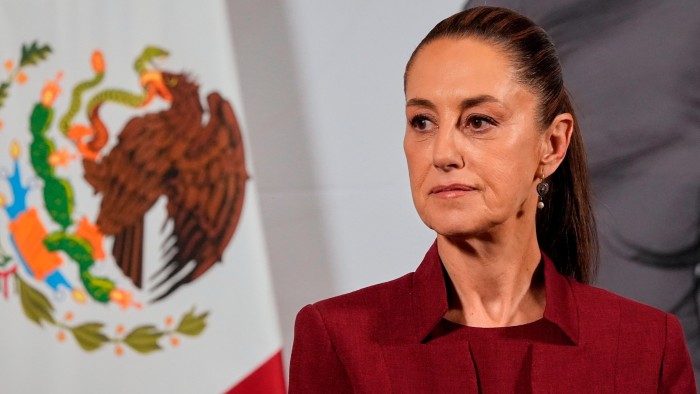Unlock the Editor’s Digest for free
Roula Khalaf, Editor of the FT, selects her favourite stories in this weekly newsletter.
The writer is founder and chief investment officer at Gramercy Funds Management
Tariff disputes, geopolitical tensions and now a potential US recession. It hardly seems the time to seek out investments in emerging markets given the risks of collateral damage to more vulnerable economies.
Yet this uncertainty isn’t a reason to flee but one to lean in when the asset class is approached properly. Emerging market credit offers one of the best ways to capitalise on volatility rather than be scuppered by it. The key is not to fall for the “index trap” in public credit markets by eschewing the passive following of benchmarks.
For years, emerging markets have frustrated investors. Why? Because conventional index-based strategies are blunt instruments in an era that demands precision. Not all emerging markets — or sectors — are created equal. A bet on Mexico’s auto parts industry carries entirely different risks from a collateralised loan in dollars to a Turkish corporate.
Yet indices bundle winners and losers together, often with disastrous timing. Consider the impact of sharp falls in the value of Russian and Ukrainian debt in 2022 after the invasion of the latter. Or Argentina’s nearly 20 per cent weighting in 2001 in the JPMorgan Emerging Market Bond Index prior to the country’s debt default later that year. Argentine bonds dropped almost 70 per cent and resulted in a material loss to investors who were compelled by the index to hold such a large weighting.
Such pitfalls can be avoided with a “barbell approach” that focuses on high conviction public credit trades and strongly secured private credit. Private credit is a proven asset class that Morgan Stanley estimates has expanded to about $1.5tn as of 2024. It is now a compelling emerging markets opportunity too, with high yields and collateralised loans with senior levels of security.
In many ways, private credit in emerging markets looks as if it is in a similar stage of development to lending in developed markets 15 years ago. This market has subsequently boomed, delivering strong returns.
Dollar-denominated, direct lending also avoids the risk of negative currency swings, while hard collateral such as factories, headquarters or personal real estate provide downside protection, mitigating default risk. Collateral drives willingness to pay and proper outcomes, even in duress. (The owner of a family conglomerate, for example, is going to be highly motivated to meet obligations if the family villa, owned for generations, is on the line.)
Undoubtedly, there are concerns about a slowdown in global growth. But individual countries and borrowers warrant a deeper look. Despite all the noise around Mexico and tariffs, the peso has held up, signalling continued confidence in the country. It is up about 5.5 per cent against the dollar in the year to date and about 2.6 per cent since US President Donald Trump’s so-called “liberation day” announcement of tariffs.
President Claudia Sheinbaum has kept a cool head in negotiations with the Trump administration. This could result in reduced tariffs or expanded “carve-outs” for some industries, allowing the “nearshoring” boom in locating production near the US to continue.
Elsewhere, eastern Europe, with Germany increasing defence spending and economic activity, stands to gain from growing capital flows and supply chain diversification. And the Mercosur bloc’s trade agreement with the EU offers economic resilience to Latin American exporters.
In addition, consider that international banks in emerging markets never really reversed their retrenchment since the 2008 global financial crisis, leaving small- to mid-size corporates starved for capital. No matter the state of tariffs negotiations, US inflation or stock market volatility, well-structured credit remains in high demand: there will still be Brazilian agriculture companies, for example, which need working capital collateralised by inventories or family conglomerates in eastern Europe willing to pledge assets and cash flows to secure needed working capital.
With very tight legal covenants for enforcement of payment, investors can meet these needs and gain exposure to dynamic, fast-growing industries in emerging markets in a secure way.
And more generally, by pairing high-quality public and private credit in a barbell investment strategy and using market swings for liquidity, investors cannot just protect themselves in uncertainty, they can also thrive. Big investors are already deploying this hybrid strategy in developed markets. Why not take this better approach to investing in emerging markets, too?
Gramercy is an investor in emerging market public and private credit
